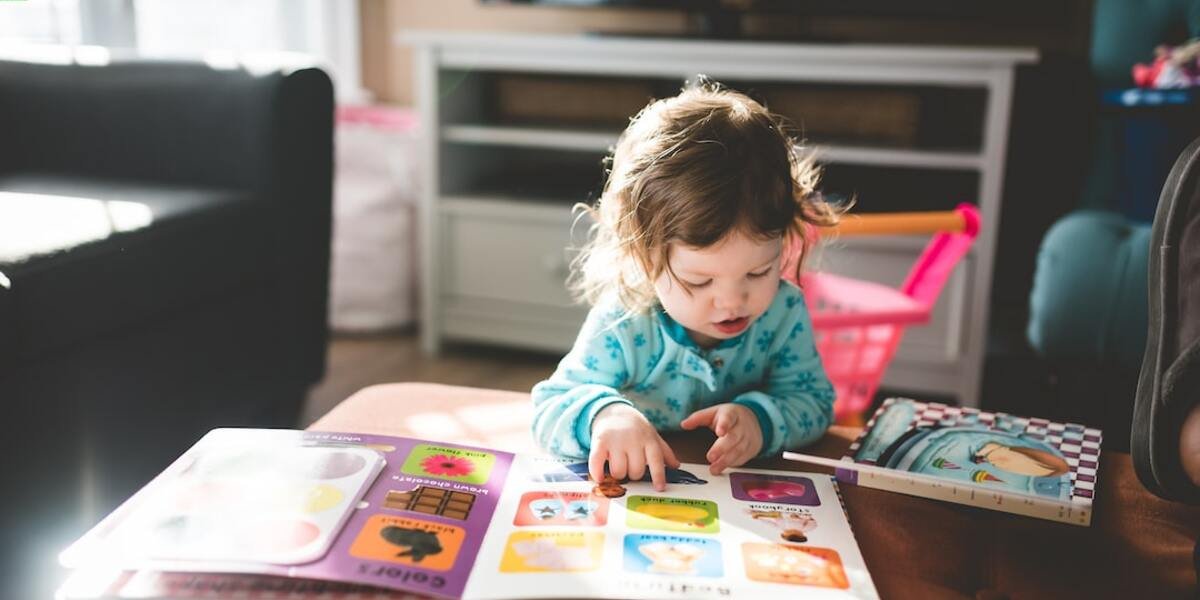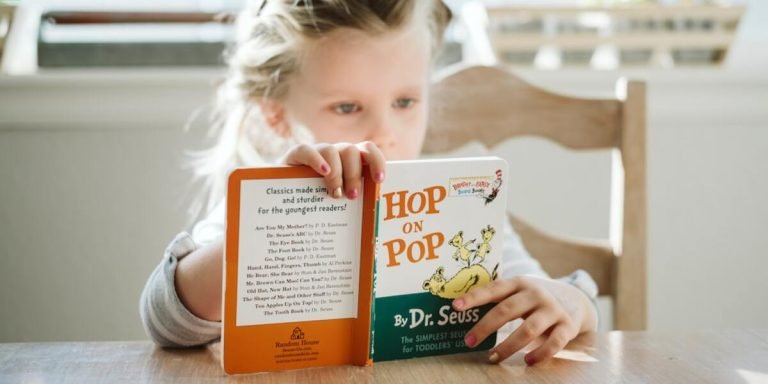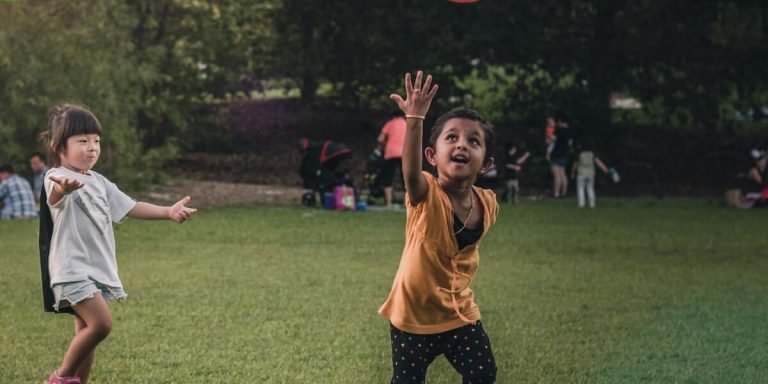Hands-On Activities: A Powerful Tool for Childhood Education
Understanding the importance of hands-on activities in childhood education is key for parents and educators alike. These engaging exercises offer an interactive approach to learning that encourages children to explore, investigate, and manipulate their surroundings – effectively reinforcing knowledge through practical experiences rather than theoretical understanding alone.
The concept behind these hands-on activities rests on a model known as Activity-Based Learning (ABL). ABL goes beyond traditional read-and-remember methods by actively involving children in their learning process. It inspires curiosity, stimulates creativity, enhances problem-solving skills and strengthens cognitive abilities.
From simple art projects at home to well-designed curricular tasks in schools – hands-on activities play an instrumental role within this transformative educational paradigm.
Did you know?
Children, particularly in the early childhood phase (3-5 years), can retain information better when they involve their senses – this is called sensory learning. Hands-on activities are an exceptional way to stimulate these senses and increase retention by up to 60% compared with traditional lecture-style teaching.
Understanding Activity-Based Learning: The Fundamentals
Activity-based learning has quickly taken center stage in today’s educational landscape, revolutionizing traditional teaching methods. The buzzword “hands-on activities” isn’t just a fancy term anymore; it speaks to the core of this progressive approach. Positioned at the intersects of technology and education, activity-based Learning offers an immersive way for children to assimilate knowledge.
Let’s decipher how they work – Hands on activities encourage students to delve deeper into their subjects by interacting with pertinent real-world elements. They move away from rote memorization and instead allow learners to engage with concepts directly, thereby facilitating better understanding and retention. In 2023 as we see more technological advancements complementing our classroom environments, these hands-on experiences are being enhanced further through digital simulations or virtual reality tools.
In essence, Activity-Based Learning driven by engaging hands-on tasks not only stimulates curiosity but also imbibes critical skills like problem-solving which are vital in tomorrow’s world.
Defining Activity-Based Learning and Its Core Principles
Activity-Based Learning, often abbreviated as ABL, is a modern pedagogical approach that diverges from traditional teaching methods. It places the learner at the center of education and revolves around active engagement in hands-on activities. This dynamic learning style resonates with many students who find it easier to grasp concepts through practical application rather than theoretical explanations.
Activity-Based Learning operates on the principle of learning by doing. Four fundamental principles that every parent and educator should know about this educational philosophy are:
1. **Student-Centered Approach**: In activity-based learning coursework, emphasis shifts away from teacher-led instructions towards student-driven exploration. The tasks designed under this method cater to different individuals’ unique abilities promoting an inclusive environment where everyone can learn according to their pace.
2. **Practical Hands-On Activities**: Make no mistake; textbooks remain essential for imparting knowledge but confirming what’s learned through real-world applications significantly enhances retention rates among young learners.
3. **Promotion of Critical Thinking Skills**: With Activity Based Learning methodology coming into play more frequently across schools worldwide now compared with 2021 or 2022 standards , pupils are encouraged not only memorize facts but comprehend them deeply thereby fostering problem-solving capacities and instilling lifelong skills for better decision making.
4-**Collaborative Environment:** Many hands on activities involve teamwork which helps children build social skills while also reinforcing cooperation.
How Hands-On Activities Facilitate Deeper Knowledge
Hands-on activities have gained considerable recognition in the education sector recently. This learning method does not only pave ways for fun-filled classroom sessions but also instills a deeper understanding of concepts among children.
“Learning by doing” is a mantra that has proven successful when it comes to activity-based learning, allowing pupils to grasp complex theories quickly and efficiently. Integration of technology into these hands-on activities can further enhance this approach’s effectiveness.
The keyword here is “hands on activities”. These are designed in such a manner that they involve active participation from students rather than passive consumption of information. Students engage their senses as they observe, manipulate objects, experiment with resources around them – all under careful guidance provided by educators or parents at home.
With rapid technological advancements shaping every sphere including education systems across globe , it’s high time we look towards integrating tech tools with our conventional teaching techniques . Not just because ‘it’s 2023’ and ‘everyone else doing it’, more so due the immense potential yield superior outcomes through such amalgamation .
A straightforward way could be introducing various educational software programs which support interactive exercises aligned course curriculum. Another possibility includes incorporating digital simulations virtual labs where kids get first-hand experience problem-solving conducting experiments digitally yet realistically thereby grasping essential lessons effortlessly .
Implementing Hands-On Activities in Various Educational Settings
Hands-On activities have significantly transformed the way children learn in various educational settings. The dynamic shift from traditional teaching models to more interactive, engaging strategies has proven effective for both teachers and students alike. Thanks to advanced technology integration into education systems now schools can implement hands-on activities with ease.
These activity-based learning exercises involve using digital tools that expose children to real-world scenarios while testing their problem-solving skills simultaneously. They serve as a bridge between theoretical knowledge and practical application, allowing pupils not only assimilate new concepts but also apply them effectively in day-to-day life situations.
From virtual science experiments on tablets or desktop computers to collaborative artwork projects through online platforms—technology is facilitating an innovative landscape where kids playfully interact with academic content rather than just passively receive it. These tech-enabled hands-on experiences are fostering creative thinking capacities of young minds by encouraging exploration within digitally simulated environments which closely resemble actual surroundings they would encounter beyond classroom walls including homes, parks, shopping malls among others.
Moreover the integration of modern technology equips classrooms with varying proficiency levels—be it low-achievers who need additional practice or high-performers seeking enriching challenges—the ability so everyone gets equal opportunity at improving via this methodological approach toward quality education.
Strategies for Incorporating Interactive Tasks in Classroom Curricula
Promoting interactive hands-on activities in the classroom setting involves more than just assigning projects or exercises. It means establishing an environment where students are actively engaged in their own learning process. Here are some strategic methods educators can implement to effectively incorporate these tasks into a diverse range of curricula.
1. Tying Tasks with Real-World Applications: Interactive tasks become impactful when they connect with real-world applications and experiences. Teachers could set up problems that mimic real-life circumstances, thus making abstract concepts easier for kids to grasp.
3.Provide Clear Instructions and Support: Hands on activities require structured guidance from teachers especially at the initial stages till students gain confidence in individually navigating through them.
4.Fostering Collaborative Environment : Group based hands-on activities foster team spirit , collaboration amongst peers leading eventually towards higher levels of comprehension for both individual learners as well as teams involved .
5.Promote Self-Directed Learning: The goal here should be guiding children toward mastery so they feel competent enough to explore other connected topics independently even after successful completion of current interaction activity session.
Adapting Hands-On Methods for Remote and Hybrid Learning Environments
In the rapidly evolving realm of 2023’s education sector, hands-on activities have emerged as a potent tool in fostering effective learning. This is all the more relevant today when technology integration has become an indispensable aspect of modern-day teaching practices.
Adapting hands-on methods for remote and hybrid learning environments holds immense potential. Even though physically engaging materials are usually associated with traditional classroom settings, they can be effectively implemented in virtual scenarios too – thanks to advancements in digital tools that facilitate activity-based learning.
Transforming classic exercises into their web-friendly counterparts involves creative strategizing on part of educators. For instance, science experiments could be demonstrated via interactive videos or even augmented reality applications which students can access from home making these practical tasks feasible without actual lab equipment.
Online art classes might benefit considerably by integrating graphics tablets or applicable software where children can draw and paint digitally while receiving real-time feedback from their mentors.
Educators may consider using online breakout rooms facilitating collaboration between learners during group projects – another pertinent example showcasing how technological incorporation with hands-on techniques is possible.
Measuring the Impact of Activity-Based Instruction on Student Outcomes
In recent years, a monumental shift has been noted in education from traditional instructional methods towards more engaging and interactive ones. One such innovative approach is Activity-based learning or ABL which integrates “hands-on activities” into the curriculum to foster better understanding and retention amongst students.
The impacts of activity-based instruction are manifold both quantitively and qualitatively. For instance, test scores commonly serve as an objective measure for student outcomes; however, they cannot encapsulate all nuances that make successful learning experiences. Besides improved academic performance reported across various studies worldwide, there’s also increased engagement observed among pupils resulting from hands-on activities integrated within lessons.
Think about it: kids naturally prefer doing over listening passively! Who wouldn’t rather learn scientific principles through fun experiments than via dry textbook readings? This active form of learning not only makes classes enjoyable but further stimulates creativity and critical thinking abilities essential in this 21st-century world.
Moreover, with advancements in technology like VR (Virtual Reality) & AR (Augmented Reality), educators today can create immersive ‘learn by doing’ environments virtually anytime anywhere! The role played by technology integration doesn’t end here though; sophisticated data analytics tools now available help track individual progress accurately enabling continuous feedback – another cornerstone for effective teaching-learning processes!
Thus measuring impact goes beyond mere grades reflecting broader aspects including increased interest levels among learners alongside improvement cognitive skills altogether making schooling memories worth cherishing indeed.
Tools and Techniques for Assessing Engagement During Hands-On Projects
The evaluation of student engagement during hands-on projects involves a multi-dimensional approach, closely intertwined with the principles of Activity Based Learning. Today, in 2023, technology integration plays an essential role in both teaching and assessing students’ performance.
To begin with, one prominent tool educators use today is digital assessment platforms. These online tools provide a real-time feedback mechanism on how well learners undertake their lessons through hands-on activities. The features included range from task assignment to progress tracking which aid teachers gauge individual and group learning outcomes precisely.
Another critical technique is employing interactive whiteboards for presentation tasks within classrooms. This not only encourages active participation but also allows instantaneous review of learner’s understanding via quiz polls or brainstorming sessions conducted during these presentations involving creative exercises.
Audio-visual aids employed like videos and podcasts have made it possible to track passive listening into productive results by engaging children effectively while explaining complex topics thus accentuating knowledge retention significantly more than traditional pedagogic methods predominantly used till recent past.
Long-Term Benefits: Tracking Skills Development Through Active Participation
In our quest to offer students the best education, we are constantly exploring effective teaching methods. One such approach that has yielded promising results is activity-based learning or ABL. Leveraging “hands on activities” in educational settings can significantly enhance student outcomes and foster a lifelong passion for learning.
As an educator, you’re not just delivering knowledge but also providing opportunities for children to engage with content directly and explore concepts practically. These hands-on experiences allow learners to take charge of their education journey by actively participating rather than passively absorbing information.
A 2023 study conducted at Cornell University revealed that students involved in ABL could demonstrate improved problem-solving abilities while conveying complex ideas more effectively compared to peers without this exposure. This form of pedagogy naturally reinforces key competencies such as critical thinking skills, creativity,and collaborative problem solving- traits highly valued in modern workplaces.
Moreover, educators have noticed significant improvement across different aspects when they introduced engaging tech-driven projects or assignments based on real-world scenarios which encouraged active involvement from all members; thus creating dynamic classrooms where every youngster was eager about learning new things daily.
Conclusion
As the home stretch of this enlightening discourse on “hands-on activities” suggests, these interactive experiences cover a wide spectrum in your child’s educational journey. They are not just creative distractions but potent aids that enrich learning understanding while promoting cognitive development and emotional intelligence—all in an engaging manner! So why hesitate to pepper their daily routine with such meaningful moments?
But our exploration doesn’t have to end here. Our website is brimming with more insightful nuggets about childhood education—resources designed for both parents and educators aiming at honing little minds into tomorrow’s leaders. Delve deeper; immerse yourself in cultivating a vibrant environment that nurtures curiosity, creativity, and comprehensive growth of young learners through hands-on activities—the compass guiding us towards effective pedagogical practices.







